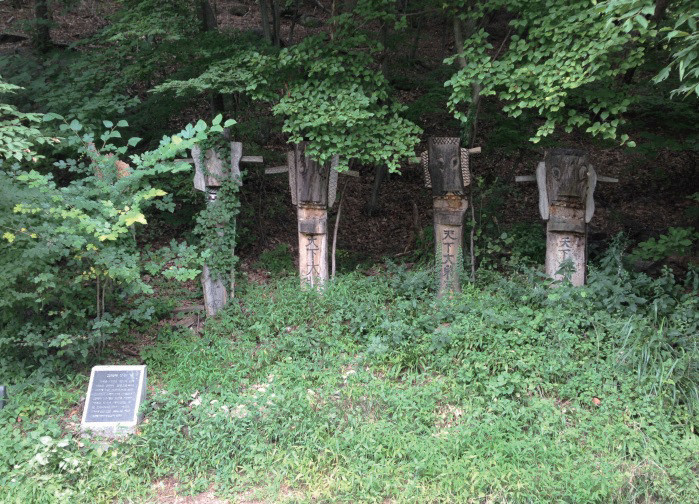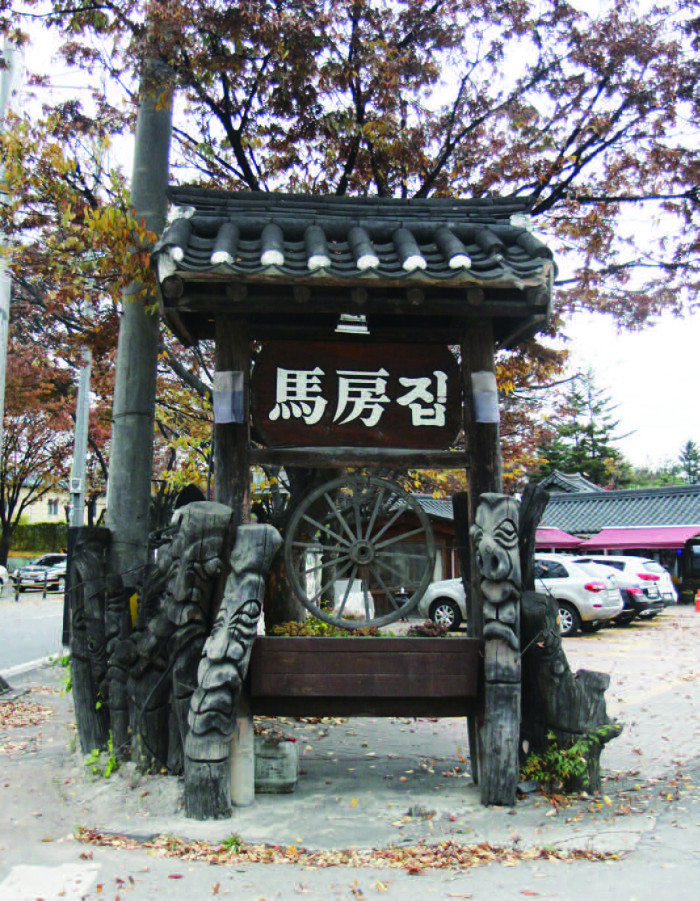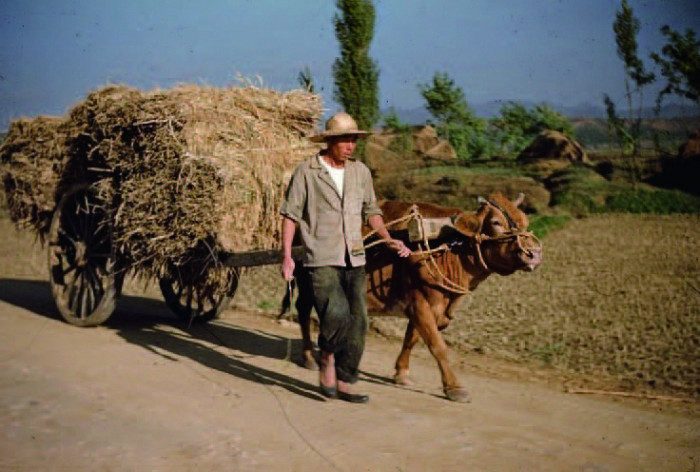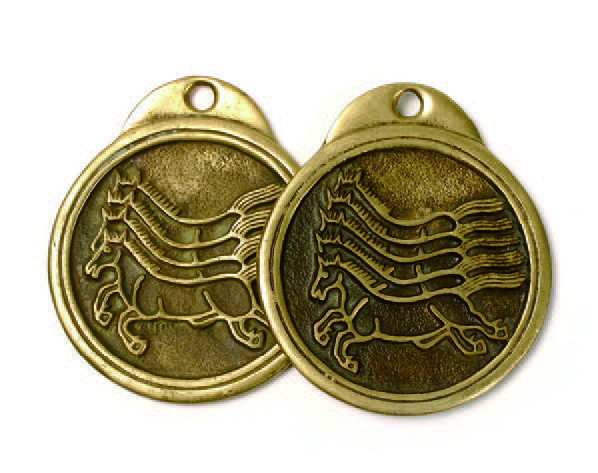"Stories on the Road" is a story about a UNESCO World Heritage site and a story. It will tell you the life and spirit of our ancestors in the ancient road of The old Namhansanseong path.
|
"Staying for a bit on the way to Hanyang"

Jangseung in Geombok-ri
There is a village named Geombok-ri outside the east gate of Namhansanseong Fortress where the old Namhansanseong path passes. Geombok-ri's name originated from Geombukcham, one of the relay stations located in the area that was installed during the Joseon Dynasty based on the relay station system. A relay station, or yeokcham in Korean, is a term combining yeok and cham that refers to the agency responsible for transportation and communication of the traditional era. Geombukcham was a post where people from the countryside on their way up to Hanyang via the old Namhansanseong path could stay before passing through Namhansanseong Haenggung Palace. Common citizens, however, could not use these stations, so they would usually stay at a jumak, a traditional Korean tavern. This seems to be how the use of jumaks spread so rapidly in the late Joseon period. As if to carry on the tradition, there are numerous restaurants in business in Geombok-ri where Geombukcham was originally located. Although the stations and taverns have long since disappeared in Geombok-ri, the jangseung, a Korean traditional totem pole, still stands in its place to greet passersby.
The Yeokcham system
“The transportation and communication system of Joseon”
Yeok, or a station that lies at the core of Joseon’s yeokcham system, was responsible for delivering official documents of the central and provincial regions, transporting public goods, receiving envoys from other countries, and providing accommodations for them. However, as the Ming Dynasty’s pabal, or post station system was introduced after the Japanese invasion of Joseon, functions such as communication of military information generated on the borders were mainly delivered via pabal, and the yeoks served as a traffic route for transport of government supplies including public items and goods presented to the king. Joseon did its best to maintain the yeokcham system as verified in Yuan and introduced by Goryeo. Despite the fact that the system resulted in various defects and negative aspects as years passed by, there was no superior transportation and communication system more outstanding than this one, so great efforts were spent to continuously reform and maintain the system. But the wave of modernization was inevitable; the system that Joseon strove to keep until the end was eventually abolished in 1895.
“A stagecoach pulled by an ox?”
2-wheel oxcart – sodalguji
The yeokcham system, the transportation and communication system in Joseon Dynasty, was a systematic means installed to support the transfer and management of documents, envoy visits, or transportation. People traveling on official duty could borrow horses at a yeokcham, or station, for use. In the late Joseon period, however, the private or unauthorized use of horses increased, and as operation of the stations struggled due to cost issues, supply and demand for horses became unstable. Where goods were transported on roads, stagecoaches on four wheels carried by oxen were used instead of the two-wheeled sodalguji. Why does an ox pull a stagecoach? At the time, a carriage could be carried by either a horse or an ox.
Mapae
Front of a mapae where the number of the horse is engraved
/ Source: Korean National Police Heritage Museum
“Certificate of use for a horse during an official business trip”
At each station, there was a mabang where horses were kept, and if a government official on an official duty trip presented a mapae issued by the government, the mabang would replace a tired horse with a fresh one. Mapae was a form of verification needed to use a horse at each station. On one side of a mapae were engraved the number of horses that the mapae owner could ride according to their position, and on the other side the date (year, month, and date) and the letters reading sangseowonin. In case of an emergency, there was a regulation known as susigeupma that provided horses whenever necessary, and such occasions included the transport of ritual goods to be dedicated to kings’ tombs for every neunghaeng or requests from generals in different military camps, interpreters, and apgongin, or draft officers. However, this susigeupma regulation led to negative ramifications of misusing station horses, and ultimately led to disorder in the station horse system. Meanwhile, a damaged or lost mapae resulted in a punishment that included 90 lashes with a stick and 2 years of having to walk.
“The place where the horses that serve as the feet of envoys or officials are raised”
Mabang, meaning a place to raise horses, is a sort of stable. For travelling envoys or federal officials, horses were provided according to the mapae issued at a sangseowon, and in order to breed these horses, the mabang were installed at each station. Seeing from the size of a mabang, there could be from two or three to dozens of horses kept in each facility. The number of horses kept and the size of mabang varied depending on the importance of the particular old paths. Since 1895 when the yeokcham system was abolished, most of the stations in the nation have been torn down, so there is nowhere left to view the large stations or stables today. Although the interior has been remodeled, the restaurant “Hanam Mabangjib” is probably the only remaining building where you can roughly see the scale of a mid to large-sized yeokcham.
<ggc의 모든 콘텐츠는 저작권법의 보호를 받습니다.>




